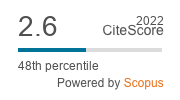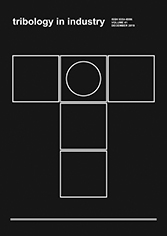Volume 46, No 2, 2024, Pages 236-250
Investigation of Microstructural Characterization and Mechanical Properties of 8YSZ Thermal Barrier Coatings: Atmospheric Plasma Spray
versus Electron Beam-Physical Vapour Deposition
Authors:
Prajakta Nikhil Kadam ![]() ,
Dattaraya V. Bhise
,
Dattaraya V. Bhise ![]() ,
,
Nikhil Rajendra Kadam ![]()
![]() ,
Vijay Kolate
,
Vijay Kolate ![]() ,
,
Khandu Gavali ![]() ,
Satish Deshmukh
,
Satish Deshmukh ![]()
DOI: 10.24874/ti.1509.07.23.10
Received: 1 July 2023
Revised: 7 August 2023
Accepted: 17 October 2023
Published: 15 June 2024
Abstract:
In this study, the formation and growth of coating microstructure was studied and reported based on APS and EB-PVD deposition mechanism with the change in spray angle. A NiCrAlY bond coat with 8YSZ ceramic coat was applied by APS and EB-PVD deposition onto the Inconel 718 with the variation in spray angle. The investigation was divided into microstructural analysis and mechanical properties to determine the effect of different deposition mechanism and its variation in spray angle. The results obtained show that the APS with 60° spray angle has more presence of defects, followed by APS 90° and EB-PVD samples. The APS avg. grain size varies between ~ 400 to 800nm, whereas EB-PVD in between ~ 150 to 300nm. The EB-PVD with 90° spray angle results in low porosity i.e. 18.12 % followed by APS 90°, EB-PVD 60°, and APS 60° spray angle, respectively. The low porosity results in high compressive residual stress than medium and high porosity. The avg. Raman shift for EB-PVD 90° spray angle i.e. low porosity is 1.86 cm-1, for medium i.e. APS 90° and EB-PVD 60° is 1.33cm-1 and 1.53cm-1 respectively, and for high porosity is 0.93cm-1. The 90° spray angle showed better microstructural and mechanical properties compared to 60°.
Keywords:
Plasma spray, EB-PVD, Spray angle, Microstructure, Residual stress,Mechanical properties





